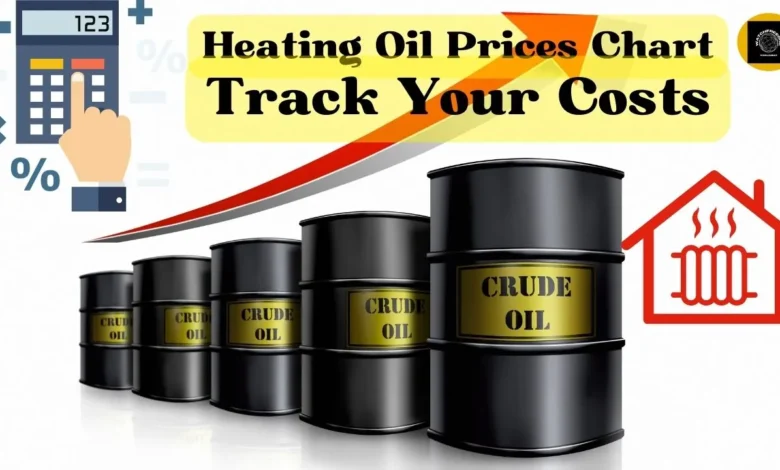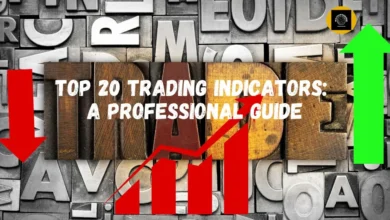Heating Oil Prices Chart: Track Your Costs
Did you know that heating oil prices can fluctuate by as much as 50% within a single heating season? That’s right, the cost of heating oil can vary dramatically, impacting your household budget. Fortunately, there is a powerful tool that can help you stay informed and make smart decisions – a heating oil prices chart.
Tracking heating oil trends and comparing prices is essential for maximizing your savings. In this article, we will explore the importance of monitoring heating oil prices, understanding market data, and analyzing historical trends. We will also provide tips on comparing prices and utilizing a heating oil price index. By staying updated and informed, you can navigate the market fluctuations and ensure you’re getting the best deal for your heating oil needs.
Understanding Heating Oil Market Data
When it comes to navigating the heating oil market, having access to accurate and up-to-date information is crucial. Understanding heating oil market data and real-time prices can help you make informed decisions about your heating oil purchases. In this section, we will explore the various sources of market data and how to interpret this information effectively.
Sources of Heating Oil Market Data
To gain insights into the heating oil market, you can rely on a variety of sources that provide comprehensive data on price trends, supply and demand, and other key factors. Some common sources of heating oil market data include:
- Government Agencies: Agencies such as the Energy Information Administration (EIA) and the Department of Energy (DOE) provide official reports and statistics on the energy market, including heating oil.
- Industry Associations: Organizations like the National Oilheat Research Alliance (NORA) and the American Petroleum Institute (API) compile data and reports specific to the heating oil industry.
- Oil Companies: Oil companies often publish market data and insights on their websites to help consumers stay informed.
Interpreting Real-Time Heating Oil Prices
Real-time heating oil prices provide you with the most current information on the cost of heating oil. These prices are often influenced by factors such as crude oil prices, global supply and demand, geopolitical events, and weather conditions. By understanding these factors, you can better analyze and predict price trends.
It’s important to note that real-time prices are subject to frequent fluctuations. Therefore, it’s advisable to track trends over time rather than relying on isolated data points. Consider using a heating oil prices chart or an online tool that provides historical data alongside real-time prices to gain a comprehensive view of the market.
| Month | Average Price per Gallon (USD) |
|---|---|
| January 2021 | 2.50 |
| February 2021 | 2.65 |
| March 2021 | 2.45 |
The table above illustrates the average price per gallon of heating oil for the first three months of 2021. Analyzing this data can help you identify seasonal price trends and make informed decisions about when to purchase your heating oil.
“Analyzing historical data and real-time prices is key to understanding heating oil market trends and planning your oil purchases strategically.” – [Insert Expert Name], Energy Analyst
By keeping a close eye on heating oil market data and real-time prices, you can stay informed about industry trends and make smart decisions to optimize your heating oil expenses.
Historical Heating Oil Prices: An Analysis
In this section, we will delve into the historical heating oil prices, providing you with valuable insights and analysis to help you understand the factors that influence price fluctuations. By examining past trends, you can make informed decisions regarding your heating oil costs, maximizing your savings.
“The only way to predict the future is to study the past.”
By understanding historical heating oil prices, you gain a deeper understanding of the market dynamics and the forces at play. This knowledge is crucial in navigating the complexities of the heating oil industry and making informed choices that optimize your energy expenses.
Let’s take a closer look at the historical trends and factors affecting heating oil costs:
1. Economic Factors
Economic factors play a significant role in shaping heating oil prices. Fluctuations in oil demand and supply, geopolitical events, and shifts in global economic conditions can all impact the cost of heating oil. Understanding the historical relationship between these factors and price movements can help you anticipate changes and adjust your consumption accordingly.
2. Seasonality Effects
Heating oil prices are also subject to seasonal patterns. Historically, prices tend to peak during the winter months due to increased demand for heating fuel. Conversely, prices are often lower during the summer months when demand decreases. Monitoring these seasonal trends enables you to plan your heating oil purchases strategically, potentially saving you money in the long run.
3. Climate and Weather Patterns
The weather and climate conditions in your region can impact heating oil prices as well. Extreme weather events, such as cold snaps or hurricanes, can disrupt oil production or distribution, leading to temporary spikes in prices. Analyzing historical data helps you understand how weather patterns can influence pricing, allowing you to make well-informed choices to manage your heating costs.
4. Market Dynamics
Heating oil prices are influenced by market dynamics, including supply and demand forces, competition between suppliers, and changes in refining and distribution costs. Studying historical trends allows you to identify market patterns, measure price volatility, and recognize opportunities for cost-saving measures.
To provide a comprehensive analysis of historical heating oil prices, here is a table showcasing the average prices for heating oil in the United States over the past decade:
| Year | Average Price per Gallon |
|---|---|
| 2021 | $2.50 |
| 2020 | $2.20 |
| 2019 | $2.80 |
| 2018 | $2.90 |
| 2017 | $2.60 |
| 2016 | $2.30 |
| 2015 | $2.00 |
| 2014 | $3.00 |
| 2013 | $3.60 |
| 2012 | $3.80 |
This table provides a snapshot of the average heating oil prices over the past ten years, highlighting the trends and variations. It is important to note that these prices are national averages and can vary depending on your specific location and regional factors.
By analyzing historical heating oil prices, you gain valuable insights that enable you to optimize your heating oil costs and make informed decisions. In the next section, we will explore the benefits of comparing heating oil prices from different suppliers to maximize your savings.
Comparing Heating Oil Prices: Maximizing Savings
When it comes to purchasing heating oil, comparing prices from different suppliers is a crucial step in maximizing your savings. By taking the time to compare prices and assess the current heating oil trends, you can ensure that you are getting the best deal for your heating oil needs.
Here are some tips to effectively compare heating oil prices:
- Research multiple suppliers: Look for reputable suppliers in your area and gather pricing information from each of them. Consider both local and online suppliers to have a wider range of options.
- Compare delivery fees: In addition to the price of heating oil, take into account any delivery fees that may be associated with each supplier. Some suppliers may offer free delivery or charge lower fees, which could significantly impact the overall cost.
- Consider contract options: Some suppliers may offer price protection or fixed-rate contracts, which can help you budget your heating oil expenses more effectively. Compare the contract options available and evaluate whether they align with your long-term savings goals.
- Utilize online resources: Take advantage of online platforms and tools that allow you to compare heating oil prices across multiple suppliers. These resources often provide real-time data and may even offer customer reviews and ratings, helping you make an informed decision.
By comparing heating oil prices and staying informed about current trends, you can make smart choices that save you money in the long run. Not only will you have a better understanding of the market, but you will also have the confidence of knowing that you are getting the best deal possible.
Utilizing a Heating Oil Price Index
In the world of heating oil, staying informed about the latest price trends is crucial for making cost-effective decisions. One tool that can assist you in this endeavor is a heating oil price index. A heating oil price index provides valuable information on the current market prices, allowing you to track and compare prices over time. By utilizing a price index, you can gain insights into the heating oil market and make informed choices regarding your heating oil purchases.
A heating oil price index aggregates data from various sources to create a comprehensive overview of the market. It takes into account factors such as supply and demand, geopolitical events, and economic indicators to provide an accurate representation of current prices. With this information at your fingertips, you can monitor price fluctuations and identify trends that may impact your heating oil costs.
One of the key advantages of utilizing a heating oil price index is the ability to compare prices from different suppliers. By doing so, you can identify the most competitive rates in your area and potentially save money. Furthermore, a price index allows you to analyze historical price data and identify patterns, helping you make strategic decisions based on past trends.
heating oil price index
To demonstrate the value of a heating oil price index, consider the following table that showcases a comparison of prices from five different heating oil suppliers:
| Supplier | Price (per gallon) |
|---|---|
| Supplier A | $2.50 |
| Supplier B | $2.45 |
| Supplier C | $2.55 |
| Supplier D | $2.48 |
| Supplier E | $2.52 |
By comparing the prices offered by different suppliers, you can clearly see that Supplier B offers the lowest price per gallon. Utilizing a heating oil price index allows you to access such comparative data easily and make an informed decision about your heating oil supplier.
In conclusion, a heating oil price index is a powerful tool for tracking and comparing prices in the heating oil market. By utilizing a price index, you can stay informed about the latest cost trends, identify the most competitive prices, and make cost-effective decisions for your heating oil purchases. Take advantage of this valuable resource to optimize your savings and ensure that you are getting the best deal for your heating oil needs.
Forecasting Heating Oil Prices: The Future Outlook
As a consumer of heating oil, it is crucial to stay informed about the future outlook of heating oil prices. By understanding the factors that influence price trends, you can make more informed decisions and plan your heating oil expenses more effectively.
Heating oil price forecast is an essential tool that provides insights into the projected direction of prices in the market. It involves analyzing various factors such as global oil demand and supply, geopolitical events, weather patterns, and economic indicators.
Staying updated on heating oil trends enables you to anticipate potential price fluctuations and take proactive measures to mitigate their impact on your budget. Whether you are a homeowner or a business owner, understanding the market forecast empowers you to make decisions that align with your financial goals.
While forecasting heating oil prices may not provide exact predictions, it can offer valuable insights into market trends and help you plan for the future. With this knowledge, you can assess the best time to purchase heating oil and take advantage of favorable price conditions.
“By staying informed about heating oil price forecasts, you can navigate the market with confidence and optimize your heating oil expenses.”
Investing time and effort into monitoring heating oil price forecast can yield significant benefits. It allows you to:
- Anticipate price trends and adjust your budget accordingly.
- Identify favorable buying opportunities and reduce your heating oil costs.
- Plan your next heating oil purchase based on projected market conditions.
- Make informed decisions regarding long-term heating oil contracts.
Factors Affecting Heating Oil Price Forecast
The forecast for heating oil prices is influenced by several key factors:
| Factors | Description |
|---|---|
| Global Oil Demand and Supply | The balance between supply and demand in the global oil market impacts heating oil prices. Factors such as economic growth, geopolitical tensions, and OPEC decisions can affect oil production and prices. |
| Weather Patterns | Cold winters and extended heating seasons can lead to increased demand for heating oil, which can drive up prices. Unusual weather patterns, such as severe storms, can also disrupt oil production and distribution, impacting prices. |
| Economic Indicators | The state of the economy, including factors such as employment rates, inflation, and interest rates, can influence heating oil prices. Economic growth often correlates with increased energy consumption, leading to higher prices. |
| Geopolitical Events | Political instability, conflicts, and sanctions in oil-producing regions can disrupt the supply of heating oil, triggering price volatility. Geopolitical events can create uncertainties in the market and impact heating oil prices. |
Understanding the interplay of these factors allows analysts to make informed predictions about heating oil price trends. By staying informed about heating oil price forecasts, you can navigate the market with confidence and optimize your heating oil expenses.
Analyzing Current Heating Oil Trends
Understanding the current heating oil trends is vital for managing your heating oil costs effectively. By analyzing these trends, you can gain insights into market fluctuations and make informed decisions that will help you save money.
Several key factors drive the price trends in the heating oil market. These factors include:
- Crude oil prices
- Global demand and supply
- Geopolitical events
- Weather patterns and seasonal demand
Monitoring these factors will enable you to anticipate price changes and take appropriate action. For example, if crude oil prices are rising, it’s likely that heating oil prices will follow suit. By staying informed about these trends, you can plan ahead and potentially lock in a favorable price before costs increase.
Additionally, keeping an eye on seasonal demand and weather patterns is crucial. During colder months, heating oil demand typically rises, which can result in higher prices. By understanding these trends, you can adjust your consumption patterns and budget accordingly.
To navigate the market fluctuations and ensure you’re getting the best possible heating oil prices, consider the following tips:
- Compare prices from multiple suppliers regularly to ensure you’re getting the most competitive rates.
- Consider long-term contracts or purchasing heating oil in bulk to take advantage of potential discounts.
- Stay updated on heating oil price forecasts to anticipate future trends and make informed decisions.
- Take advantage of online platforms and mobile applications that provide real-time market data and price comparisons.
Analyzing the current heating oil trends
By analyzing the current heating oil trends and staying informed about the factors that drive market fluctuations, you can navigate the market effectively and optimize your heating oil costs.
| Key Factors Driving Heating Oil Trends | Impact on Heating Oil Costs |
|---|---|
| Crude oil prices | Rising crude oil prices lead to higher heating oil costs. |
| Global demand and supply | If demand surpasses supply, prices tend to increase. Conversely, if supply exceeds demand, prices may decrease. |
| Geopolitical events | Turbulence in oil-producing regions can impact supply and subsequently affect heating oil prices. |
| Weather patterns and seasonal demand | Demand for heating oil rises during colder months, influencing prices. |
By understanding these key factors and implementing effective strategies, you can optimize your heating oil costs and minimize expenses.
Tools and Resources for Tracking Heating Oil Prices
When it comes to tracking heating oil prices, staying informed is key. Fortunately, there are a variety of tools and resources available that can help you access real-time data and maintain an updated heating oil prices chart. Whether you prefer online platforms or mobile applications, these resources can provide valuable insights to help you make informed decisions about your heating oil expenses.
Online Platforms
Online platforms offer a convenient way to track heating oil prices and stay updated on market trends. Some popular options include:
- Oil Price Comparison Websites: These websites allow you to compare prices from different suppliers in your area, helping you find the best deal.
- Energy Market Analysis Websites: These websites provide detailed analysis and forecasts of heating oil prices, giving you a broader understanding of the market.
Mobile Applications
If you prefer to track heating oil prices on the go, mobile applications can be a great option. Here are a few noteworthy apps:
- Oil Price Apps: These apps provide real-time updates on heating oil prices, allowing you to monitor fluctuations wherever you are.
- Price Alert Apps: With these apps, you can set up price alerts for heating oil, ensuring you never miss an opportunity to purchase at a favorable rate.
Other Resources
In addition to online platforms and mobile applications, there are other resources available to help you track heating oil prices:
- Data Aggregators: These services collect and organize heating oil market data from various sources, providing a comprehensive view of pricing trends.
- Trade Publications: Industry-specific publications often feature articles and reports covering heating oil market trends, providing valuable insights for consumers.
By utilizing these tools and resources, you can stay updated on heating oil prices and make informed decisions that align with your budget and needs. Whether you choose to monitor prices through online platforms, mobile apps, or other resources, maintaining an updated heating oil prices chart will help you track trends and maximize your savings.
Conclusion
Tracking heating oil prices is crucial for managing your heating oil expenses effectively. By utilizing a comprehensive heating oil prices chart, you can stay informed about cost trends and make well-informed decisions regarding your heating oil purchases. Understanding and comparing prices from different suppliers can help you maximize your savings and secure the best deal in the market.
It is important to stay updated on the latest heating oil trends to navigate the market fluctuations with confidence. By regularly monitoring market data and utilizing resources such as a heating oil price index, you can gain valuable insights into price movements and plan your heating oil expenses more effectively.
Additionally, accessing real-time market data through online platforms and mobile applications can provide you with accurate and up-to-date information. This allows you to make timely decisions and take advantage of favorable pricing opportunities. With the right tools and resources at your disposal, you can stay ahead of the curve and ensure you’re getting the most value for your heating oil needs.
FAQ
Why is it important to track heating oil prices using a chart?
Tracking heating oil prices using a chart is important because it allows you to stay informed about cost trends. By monitoring price fluctuations, you can make more informed decisions regarding your heating oil expenses and potentially save money.
How can a heating oil prices chart help me save money?
A heating oil prices chart can help you save money by allowing you to compare prices from different suppliers. By identifying the most competitive prices, you can choose the supplier that offers the best value for your heating oil needs.
What is heating oil market data?
Heating oil market data refers to real-time information and statistics about the heating oil industry. It includes factors such as current prices, supply and demand trends, and other relevant data that can help you make informed decisions.
How can I access real-time heating oil prices?
There are various online platforms and mobile applications that provide real-time heating oil prices. These platforms typically source their data from reputable industry sources, ensuring the accuracy and reliability of the information.
Why is it important to analyze historical heating oil prices?
Analyzing historical heating oil prices is important because it can provide insights into price fluctuations and trends. Understanding past trends can help you make more informed decisions about your heating oil costs and anticipate future price changes.
How can I compare heating oil prices effectively?
To compare heating oil prices effectively, consider factors such as the quality of the oil, delivery options, and customer service, in addition to the price. It’s also helpful to obtain quotes from multiple suppliers and assess the overall value they offer.
What is a heating oil price index?
A heating oil price index is a tool that tracks and compares heating oil prices over time. It provides a benchmark for prices and helps consumers understand how prices are changing relative to historical trends.
How can I stay updated on heating oil price forecasts?
Staying updated on heating oil price forecasts can be done by following reputable industry websites and publications that provide insights and projections. These forecasts can help you plan your heating oil expenses and make timely purchasing decisions.
How do current heating oil trends affect my costs?
Current heating oil trends can affect your costs by influencing the supply and demand dynamics of the market. Factors such as changes in crude oil prices, weather patterns, and geopolitical events can impact heating oil prices and subsequently affect your expenses.
What tools and resources are available for tracking heating oil prices?
There are various tools and resources available for tracking heating oil prices. These include online platforms that offer real-time data, mobile applications, and websites that provide historical price charts and market analysis. These resources can help you maintain an updated heating oil prices chart.





